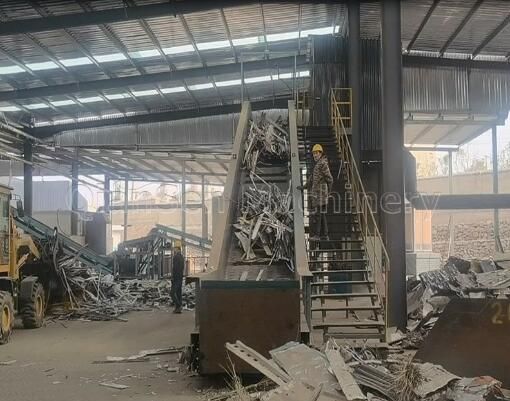Recycling aluminum is an efficient way to conserve resources and energy. A critical component in this process is the recycled aluminum shredder. This article explores how these shredders work, detailing their mechanisms, stages, and the benefits they provide.

Recycled aluminum shredders are designed to break down aluminum waste into smaller, more manageable pieces. They employ various mechanical processes to achieve this, including cutting, tearing, and hammering.
Cutting Mechanism
The primary mechanism in most aluminum shredders is the cutting action. The shredder consists of rotating shafts equipped with sharp blades. As aluminum waste is fed into the shredder, these blades cut and slice the material into smaller pieces. The cutting blades are often made from hardened steel to withstand the toughness of aluminum.
Tearing and Shearing
In addition to cutting, shredders use tearing and shearing forces to further reduce the size of aluminum pieces. Dual-shaft and multi-shaft shredders are particularly effective in this regard. The intermeshing blades on multiple shafts tear and shear the aluminum, breaking it down more efficiently and uniformly.
Hammering
Some shredders use hammer mills that apply high-speed hammering to crush and pulverize aluminum waste. The hammers strike the aluminum with significant force, breaking it into smaller fragments. This method is useful for processing larger and more rigid aluminum pieces.
The shredding process involves several stages, each crucial for transforming aluminum waste into recyclable material.
Feeding the Material
The first stage involves feeding the aluminum waste into the shredder. This can be done manually or through automated feeding systems, depending on the size and capacity of the shredder. Proper feeding ensures the material is evenly distributed and prevents jams or overloads.
Initial Shredding
Once the material enters the shredder, it undergoes initial shredding. The cutting blades or hammers break down the larger pieces of aluminum into smaller fragments. This stage is critical for reducing the volume of the waste and making it easier to handle.
Secondary Shredding
In many shredders, a secondary shredding stage follows the initial one. This stage further refines the size of the aluminum pieces. The material passes through additional blades or hammers, ensuring a more uniform and smaller particle size. Secondary shredding improves the efficiency of subsequent recycling processes.
Sorting and Separation
After shredding, the aluminum fragments may undergo sorting and separation. Magnets, air classifiers, and other separation technologies remove any contaminants or non-aluminum materials. This ensures the purity of the shredded aluminum, making it more suitable for recycling.
Recycled aluminum shredders provide numerous advantages, both for the recycling industry and the environment.
Efficiency in Recycling
Shredders significantly enhance the efficiency of aluminum recycling. By reducing the size of aluminum waste, they make it easier to transport, handle, and process. Smaller pieces melt more quickly and uniformly, improving the overall recycling process.
Environmental Impact
Using aluminum shredders helps reduce the environmental impact of aluminum production. Recycling aluminum saves up to 95% of the energy required to produce new aluminum from raw materials. This energy savings translates to lower greenhouse gas emissions and a smaller carbon footprint.
Economic Benefits
Recycled
aluminum shredders also provide economic benefits by lowering operational costs and creating profitable recycling streams. The reduced size and uniformity of shredded aluminum make it more valuable and easier to sell to aluminum producers and manufacturers.
Resource Conservation
Shredding and recycling aluminum conserve natural resources by reducing the need for raw material extraction. This helps preserve ecosystems and reduce the environmental damage associated with mining and processing new aluminum.
Proper maintenance and adherence to safety protocols are essential for the optimal performance of aluminum shredders.
Regular Maintenance
Regular maintenance ensures the shredder operates efficiently and has a longer lifespan. This includes routine inspections, blade sharpening or replacement, lubrication of moving parts, and checking for any signs of wear or damage.
Safety Measures
Safety is crucial when operating aluminum shredders. Operators should receive proper training and wear appropriate protective gear, such as gloves and safety glasses. Ensuring that all safety guards and emergency shut-off mechanisms are in place and functioning correctly is also vital.
Recycled aluminum shredders play a critical role in the aluminum recycling process. By efficiently breaking down aluminum waste into manageable pieces, these machines enhance the recycling process, contribute to environmental conservation, and offer economic benefits. Understanding how these shredders work and maintaining them properly ensures they remain effective and safe. For more information on recycled aluminum shredders or assistance in selecting the right equipment, please contact us. For high-quality shredders and expert advice, consult your trusted supplier.
Copyright © Xinji Qiansen Environmental Protection Technology Co.Ltd All Rights Reserved | Sitemap | Powered by 